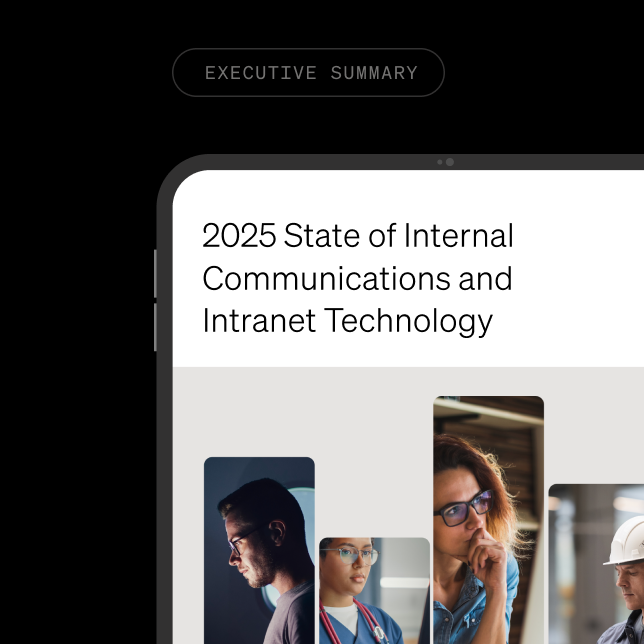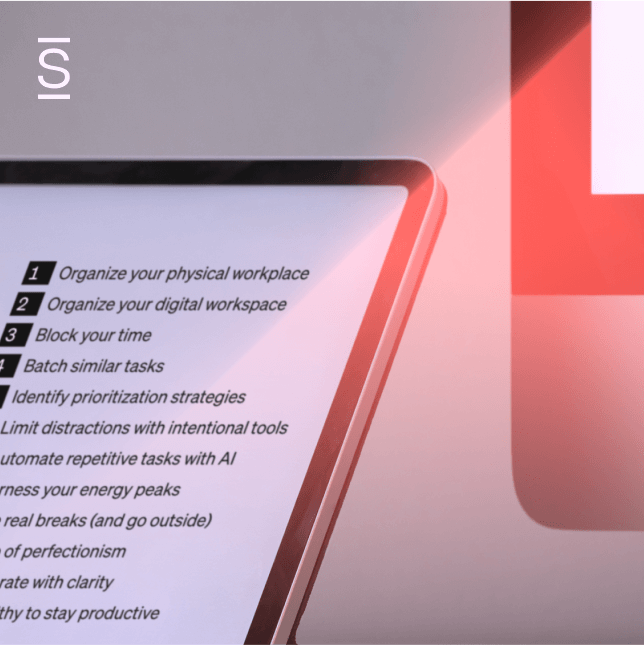Inclusive leaders play a crucial role in creating a positive, productive work environment for a diverse workforce. But what does it mean to be an inclusive leader, and why is it so important?
This post explores the significance and importance of inclusive leadership, offering practical strategies for achieving it in your own leadership style.
Understanding inclusive leadership
The most important thing to know about inclusive leadership is that it is not limited to one specific leadership style. Any leader can be an inclusive leader.
Inclusive leaders recognize the value of diversity within their team and strive to create an environment in which everyone is respected, heard, and valued. They focus on ensuring that all team members are given equal opportunities to contribute, participate, and succeed.
Defining inclusive leadership
Inclusive leadership is a management approach that promotes and encourages diversity, equality, and inclusion within an organization. It fosters a supportive environment in which individuals from different backgrounds, experiences, and perspectives feel valued, respected, and empowered to contribute their unique ideas and talents.
Organizational benefits include collaboration, innovation, and equal opportunities for all members—from senior leaders to junior staff—ultimately driving organizational success and creating a positive and inclusive work culture.
Key elements of inclusive leadership
Inclusive leadership values and leverages the unique perspectives and contributions of every individual, regardless of their background or identity. It’s more than just a buzzword—it’s a leadership mindset that depends on the following key elements of personal growth and development.
- Self-awareness: Inclusive leaders recognize their own biases and privileges. They work continuously to deepen their awareness of their own beliefs, values, and blind spots to ensure fair and inclusive decision-making.
- Empathy and inclusion: Inclusive leaders actively seek to understand and empathize with experiences, perspectives, and backgrounds that differ from their own. They make sure everyone on their team feels valued and respected.
- Courageous conversations: Inclusive leaders are comfortable having difficult conversations about diversity, equity, and inclusion. They encourage open communication, invite different points of view, and address issues related to bias and discrimination.
- Collaborative decision-making: Inclusive leaders foster a culture of teamwork and seek input from a diverse range of employees. They recognize and appreciate the unique strengths and talents each individual brings to the table.
- Mentorship and development: Inclusive leaders invest in the development and advancement of employees from underrepresented groups. They provide mentorship opportunities and sponsorships, creating pathways for growth and leadership positions throughout the organization.
- Accountability and measurement: Inclusive leaders hold themselves and their teams accountable for promoting diversity, equity, and inclusion. They set clear goals, regularly evaluate progress, and take necessary actions to address gaps or challenges.
- Continuous learning: Inclusive leaders are committed to their own learning and growth. They stay informed about the latest research, trends, and best practices related to diversity and inclusion to ensure ongoing improvement in their leadership approach.
- Cultural competence: Inclusive leaders actively educate themselves about different cultures, customs, and beliefs. They understand the importance of cultural competence in creating an inclusive workplace where everyone feels comfortable and valued.
The importance of inclusive leadership in modern business
Inclusive leadership does more than ensure the physical safety of a diverse workforce. It ensures everyone’s psychological safety as well. When people feel emotionally safe sharing diverse ideas and perspectives in open, honest interactions, the entire organization breaks free of the status quo.
An authentic commitment to inclusive leadership can take team cohesion and innovation to new heights, becoming a key competitive advantage for the organization.
The role of inclusive leadership in employee engagement
Unconscious biases, especially those that are systemic within an organizational culture, can undermine employee engagement throughout the company. Personal biases based on race, religion, gender, sexual orientation, and the like may be invisible to leadership, but those biases are keenly felt by those whose thoughts and opinions tend to be overlooked.
A commitment to diversity and inclusive workplace cultures can raise employee engagement significantly, with positive benefits for employee retention, innovation, and bottom-line KPIs.
Driving innovation through inclusive leadership
Can inclusive leadership behaviors really drive innovation? According to McKinsey & Company, the business case for diversity and inclusion as a competitive advantage continues to grow stronger as more research comes in. Today, the statistical significance of the relationship between diversity and profitability is stronger than ever.
Strategies for developing inclusive leadership
Unfortunately, increasing an organization’s diversity does not automatically ensure inclusive leadership styles or inclusive teams. Using social listening, McKinsey found that even when diversity sentiment is positive, inclusivity sentiment can still be negative.
Clearly, it isn’t enough to hire a diverse workforce. Inclusive leadership traits need to be cultivated actively and intentionally.
Creating an inclusive culture
What does it take to nurture inclusive leadership traits? McKinsey identified five key management strategies companies can take to become truly inclusive organizations and improve their bottom line.
- Give diverse talent real representation. Companies need to move beyond mere tokens of ethnic and gender diversity, becoming deeply intentional about what diversity looks like in their company and how to ensure that diversity is represented at every level of the organization.
- Strengthen inclusive leadership skills and accountability. In short, broad inclusion programs are not enough. Inclusive leadership programs need to be implemented across the board, including senior leadership, and team leaders at every level need to be held accountable for their progress—not just in diversity hiring but in their inclusive leadership approaches.
- Provide honest and transparently equal opportunity. Building a diverse and inclusive workforce is not about promoting “diverse people”—an attitude that only serves to continue a culture of bias and misunderstanding. Instead, companies need to employ analytics to investigate their own promotional systems and pay structures, replacing unconscious bias with systems that are true meritocracies.
- Promote open transparency and tackle microaggressions. By defining open, inclusive behavior in daily interactions, successful leaders can address behaviors that don’t serve the company’s commitment to inclusion. This gives leaders the clear authority to curb negative communication styles, passive-aggressive behavior, and a wide range of microaggressions that can undermine inclusive efforts.
- Offer unequivocal support for multivariate diversity. Organizations need to raise cultural intelligence and emotional intelligence to new heights, ensuring that every employee, no matter their personal background, enjoys positive personal experiences with their colleagues and managers in the workplace. For transparent leadership assessment, organizations should implement internal surveys that focus on inclusion and employee experience.
Training and development for inclusive leadership
Diversity initiatives need to be paired with inclusive leadership training to ensure that business leaders are prepared to manage a diverse workforce and cultivate inclusivity. One of the signature traits of inclusive companies is training company leaders to support the organization’s inclusion initiatives.

Real-world inclusive leadership examples
The McKinsey study highlights four companies that have made significant headway in the areas of diversity and inclusion: Citigroup, Pentair, Target, and Lockheed Martin. Each of these is summarized below.
Inclusive leadership examples in successful companies
Citigroup case study: Inclusive leadership in action
As a global investment banking company, Citigroup is no stranger to the industry’s common excuses—suggestions that the industry simply doesn’t attract enough diverse talent for diversity to approximate the broader population. Citigroup is challenging that story, and winning. For example, by setting equality, accountability, and transparency as core values, the company rose from 8 percent executive gender diversity to 30 percent in just 5 years.
Business decisions are tracked at every level, and diversity and inclusion scorecards are presented at every board meeting. The organization intends to continue diversifying every level of the organization, from senior leadership to new hires, across multivariate factors.
Pentair case study: Defining diversity broadly—and globally
Pentair is “a water-treatment company with a global footprint.” It defines diversity across multivariate spectra, including:
- Age
- Country of origin
- Ethnicity
- Gender
- Life experiences
- Personal style
- Physical ability
- Race
- Religion
- Sexual orientation
The organization places a strong focus on company culture, striving to ensure that employees can contribute their unique strengths to their teams by working in the ways that best suit them. Their diversity and inclusion strategy focuses on three pillars: hiring and promotion, development and retention, and leadership training.
Target case study: Data, listening, and bold conversation
The eighth-largest retailer in the U.S., Target Corporation is committed to reflecting the full diversity of the hundreds of millions of people the company serves. The company’s inclusion and diversity analytics team tracks its progress across multiple dashboards, guiding changes in diversity and inclusion tactics every quarter. Leaders are held accountable for their decisions regarding pay and promotions with the ability to check their own diversity statistics.
Lockheed Martin case study: Innovative leadership training
The global security and aerospace leader is dismantling barriers to diversity and inclusion by educating its leaders in communication skills. Leadership is being trained to take on the tough conversations that can make a difference across the organization’s 110,000 employees. Highly regarded for its tech innovation, Lockheed Martin is pioneering innovative experiential training that challenges leaders to confront the realities of privilege head-on.
The company’s four-pronged strategy includes:
- Ambitious targets for gender representation across the enterprise
- Using an external partner for talent identification, acquisition, and promotion to eliminate unconscious bias
- Immersive learning to radically shift behavior and foster a greater sense of belonging
- Gathering feedback through anonymous employee surveys for continuous improvement efforts
How a modern intranet like Simpplr can support inclusive leadership
If there’s a theme to all of the above, it can be summed up in two essential principles:
- If you want to improve your company’s diversity, track it.
- If you want to improve inclusive leadership, train it.
A modern intranet like Simpplr can help you do both.
The role of modern intranet in fostering an inclusive environment
When you set out to shift or even transform corporate culture, the challenge for enterprise organizations is the sheer scale of the job.
- How do you make sure every leader gets the training they need?
- How can you ensure that onboarding is handled with an inclusive approach for every new employee?
- How do you know if it’s working, or where training might need to be repeated?
The answer to all of these questions is simple—a modern, AI-powered intranet.
Utilizing Simpplr for inclusive leadership
Simpplr can deploy webinar training at scale with native video. It can make sure onboarding is individualized for every employee. It can even use the power of AI and passive listening to uncover the struggles your employees aren’t willing to voice out loud.
Simpplr also makes enterprise employees feel seen on a daily basis. It learns what corporate news items each employee is interested in and serves up a uniquely personalized feed to every individual in the company. It incorporates acknowledgment systems that colleagues can use to show appreciation for selfless acts of inclusion. It lets HR managers administer employee surveys in the same dashboard those employees use every day.
The platform can even foster effective communication, helping employees with similar interests find each other across the entire company—and helping cross-cultural interactions find common ground.
Intrigued about how to engage your leadership team? Download the ultimate guide and worksheet to unlock executive engagement: Take the leadership engagement challenge


















